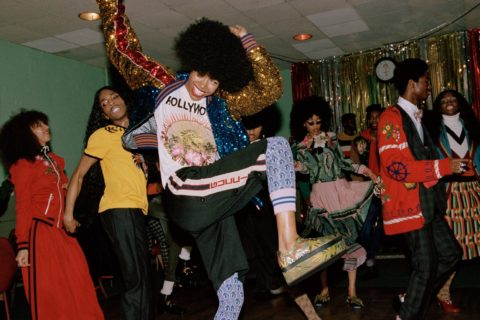Is Casting Diverse Models Just a Trend?
When Japanese clothing brand Uniqlo opened its first Canadian location in Toronto last fall, it announced its arrival with larger-than-life billboards in unexpected spots. Subway platform walls were blanketed in ads. On social media, models wore the brand’s signature simplicity. But what made this campaign different was its ordinariness, from the random yet recognizable locations to the models of varying ethnicities, ages and heights. Some of the men had long, thick beards; one had a perfectly tied turban. One woman wore a hijab folded into a one-sided wrap.
Helping to pull that campaign together was Lorde Inc., a street casting modelling agency that solely, and intentionally, represents models of colour. Founded in London, England, in 2014, by artists Isaac Kariuki, Christopher Whitfield and Nafisa Kaptownwala, the agency was started out of frustration, says Kaptownwala, who now runs the Toronto office.
“At the time, there were so few models of colour that your beauty was always being negotiated through a white lens,” she says. “We wanted a platform where we would be able to ‘big up’ ourselves. I never really thought of it as a business at first but more of a platform to celebrate our beauty.”
Since then, the agency has booked models for Kenzo, VICE, Milk Makeup and singer Frank Ocean (for his “Nikes” video). Casting directors can be the influential creative bridge to close the gap between everyday people and the fashion industry.
Fashion’s relationship with inclusion is fraught with missteps still. Just think of Marc Jacobs and his clipped response to critiques when he used dreadlocks in his Spring 2017 show. However, in January, the hotter-than-hot Gucci released teaser videos of an all-black cast of models auditioning for its pre-Fall 2017 campaign. And, on the corporate side, the storied house pledged to work with Italian non-profit organization Liberi e Uguali (which translates to “Free and Equal”) to help make the company more diverse across the board.
That progress is good, but there is a risk: “Since we launched, ‘diversity’ has become increasingly trendy, which I never predicted,” said Kaptownwala. “I was just trying to make space for myself and my friends in an industry that basically ignores us. And now I feel like our work is being swiped from under us.”
Diversity in fashion will be sustainable if the creators and business people of the industry are diverse, says Ben Barry, an associate professor of equity, diversity and inclusion at Ryerson University in Toronto. “The conversation needs to move beyond the runway to who is making model decisions,” he says.
Before being named Teen Vogue’s first black woman editor-in-chief, Elaine Welteroth worked on the shoot “Cultural Appreciation,” in the magazine’s May 2016 issue. The story featured young women talking about culturally specific attributes: baby hair at the temples, afros, nose piercings. At the time, Welteroth said people thought it unlikely she could find an Aboriginal woman who really wore a feather in her hair, but Zan Casting, headed up by Zan Ludlum in New York, did.
Similar to Lorde, Zan helps place “real” models in commercials, films and runway shows but says there are limitations. “[I’m] just going through packets and looking at a bunch of curvy girls who I know designers won’t be able to put on the runway because of their sample sizes,” she says. Still, she remains optimistic, recognizing the shift in fashion as a start in redefining beauty. “The majority of the clients we work with are interested in taking responsibility for pushing boundaries and recognizing that…we’re leading visual media. We have a responsibility to speak to a lot of people.”
Kaptownwala wants to be positive but won’t mince words. “I think the only thing that’s going to make it sustainable is if brands want to self-reflect on what makes inclusive casting important,” she says. “If these brands are only trying to capture a moment because it’s trendy, that doesn’t get to the root of the problem and it doesn’t facilitate social change.”








